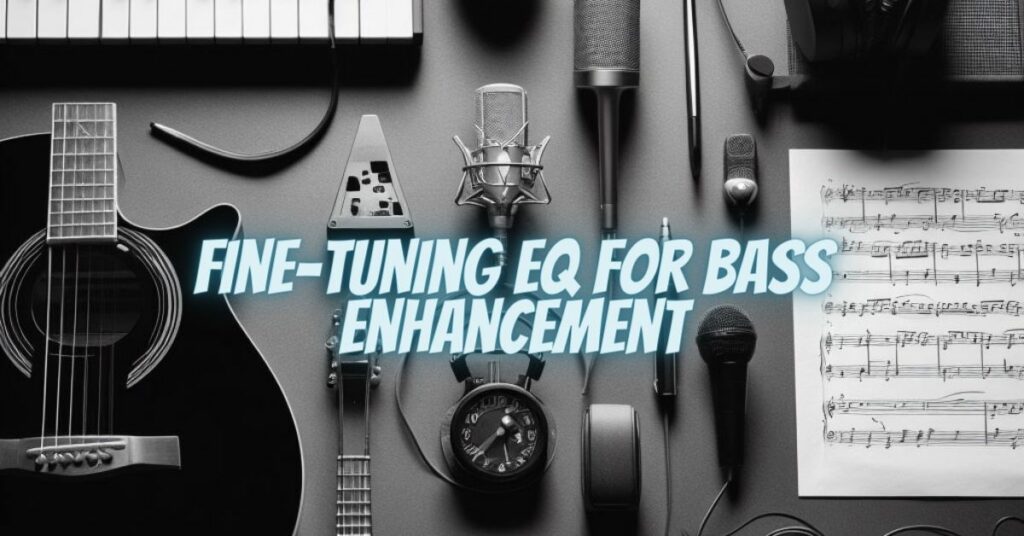The bass frequencies in music are the foundation of the sound, providing depth and power. To make sure your bass sounds full, clear, and balanced, you’ll need to employ equalization (EQ) effectively. In this article, we will explore how to tune EQ for bass, providing you with the tools and techniques to enhance low-end frequencies for a powerful and well-defined sound.
Understanding Bass Frequency Range
Bass frequencies typically encompass the range from 20 Hz to 300 Hz. This range includes the sub-bass frequencies below 60 Hz, the low bass frequencies between 60 Hz and 150 Hz, and the upper bass frequencies around 150 Hz to 300 Hz. To tune your EQ for bass, you’ll need to consider all these sub-ranges.
- Clear the Low-End: Start by applying a high-pass filter to clear the very low frequencies below your intended bass range (e.g., below 20-30 Hz) to eliminate rumble and unnecessary vibrations.
- Identify Problem Areas: Listen carefully to your bass track and identify any problematic frequency areas. This might include muddiness in the low-mid range (around 100-300 Hz) or excessive resonances.
- Reduce Muddiness: If your bass sounds muddy or lacks clarity, try reducing frequencies in the 150-300 Hz range. Make subtle cuts to clean up the sound without making it hollow.
- Enhance Definition: To make the bass sound more defined, boost the low bass frequencies (60-150 Hz). This can add warmth and punch to the sound, making it more prominent.
- Tonal Shaping: Depending on your musical style and preference, you might want to shape the tonal characteristics of the bass. Consider boosting the upper bass frequencies (150-300 Hz) for a brighter and more present sound or reduce them for a deeper, smoother tone.
- Avoid Excessive Boosts: When boosting or cutting frequencies, be cautious about applying excessive gain. A gentle adjustment is usually more effective and avoids the risk of distortion or unnatural sound.
- Experiment and Listen: Tune your EQ settings while continuously listening to the changes you’re making. Try different adjustments to find the sweet spot that suits the specific bass track and musical context.
- Consider the Mix: Bass tuning doesn’t happen in isolation. Pay attention to how the bass interacts with other instruments in the mix. Ensure that it has its space in the frequency spectrum without clashing with other elements.
- Subtle Compression: Consider applying subtle compression to the bass track to control dynamic fluctuations and make the sound more consistent. Compression can help maintain a steady and clear bass presence.
- Monitor the Low-End: Use quality studio monitors or headphones that accurately reproduce low frequencies. The ability to hear and judge the low-end accurately is crucial for effective bass tuning.
- Trust Your Ears: While guidelines can help, the most important tool for tuning your bass EQ is your ears. Listen carefully and trust your perception of how the bass sounds in the context of the mix.
Tuning EQ for bass is a crucial aspect of achieving a powerful and well-balanced sound in music production. By understanding the different bass frequency ranges, identifying problem areas, and applying subtle adjustments, you can enhance the low-end frequencies to create a bass that sits perfectly in the mix and provides a solid foundation for your music. Practice, experimentation, and attentive listening are key to mastering the art of bass EQ tuning.


